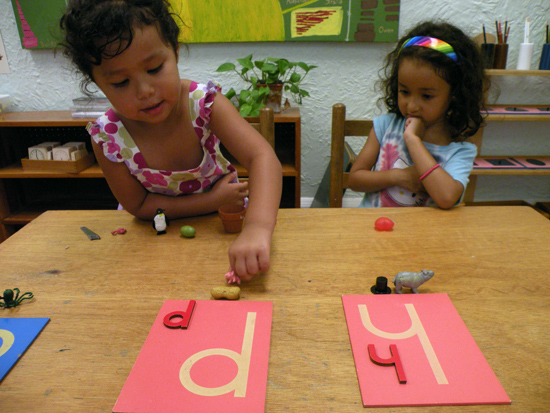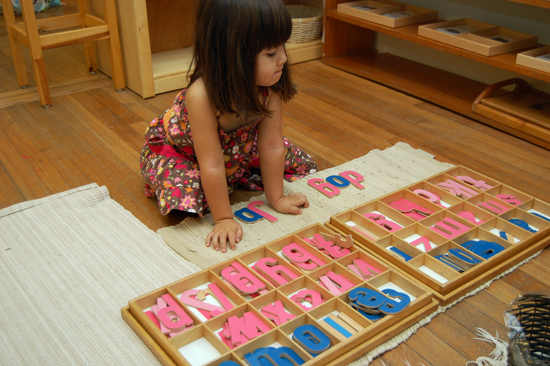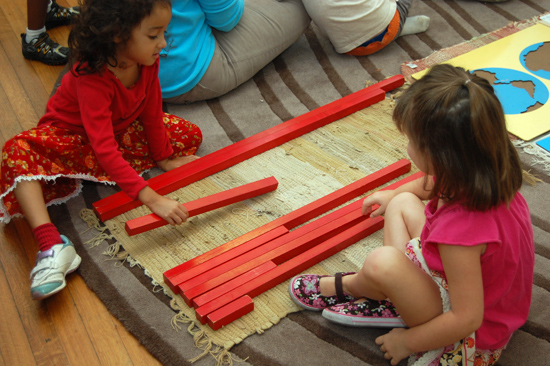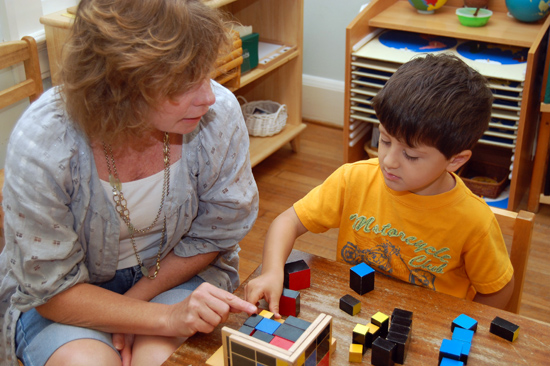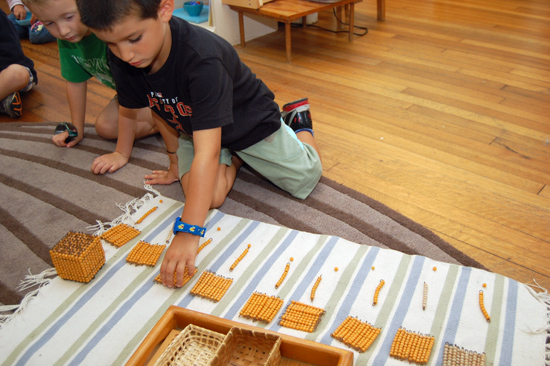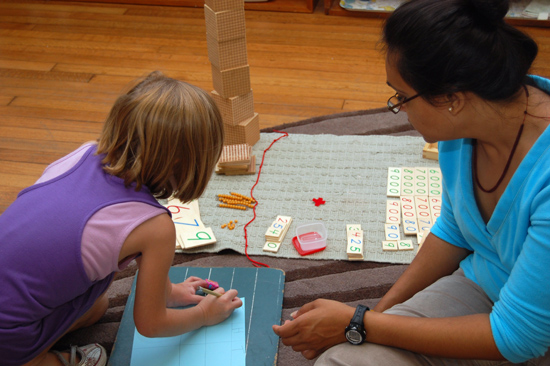
|
The Early Childhood Program
|
|
It is through the materials in the practical life area that the child develops the self-confidence, control and concentration essential for mastery of the other more advanced area of a Montessori class. |
|
Children will be naturally drawn to this area because these materials are most familiar to them. This familiarity also serves to provide the children with a feeling of security and wellbeing. The work will contain objects and materials that are encountered in the everyday living experiences of the children's culture. |
|
Matching sets of objects, learning the names of household items, fruits and vegetables and geometric shapes are activities, which build language and early literacy skills. |
|
|
Young children are introduced to letters by listening to the sound each letter makes while tracing the textured surface of the sandpaper letters. |
|
Once children have recognition of letters, they begin to identify the initial sounds in words and match them accordingly. |
|
The moveable alphabet gives children something concrete, which aids to word composition. |
|
Each sensorial material was designed to isolate one defining quality, such as color, weight, shape, texture, size, sound and smell. |
|
The primary purpose of the sensorial area is to help the child sort out the many and varied impressions given by the senses. |
|
It is in the sensorial area that math concepts are first introduced and internalized. |
|
Montessori students use hands-on learning materials that make abstract concepts clear and concrete. |
|
This approach to learning offers a logical strategy for helping students understand and develop a firm foundation in mathematics and geometry. |
|
The Montessori early childhood classroom offers many opportunities for the child to expand knowledge of the world during the early years when they are motivated by a natural curiosity. |
|
Emphasis is placed on community. The class gathers multiple times a day for group lessons, book reading, songs, counting the calander, and the children are invited to share stories about their experiences and interests. |
|



